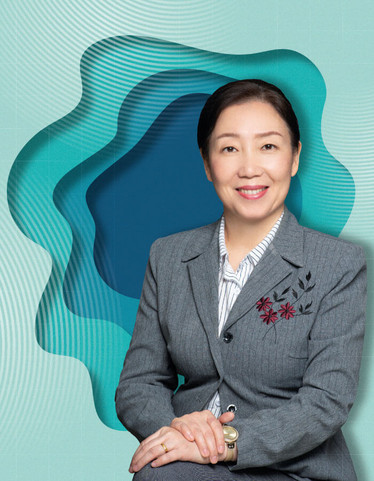Pediatrics Polymath
Sitting Down With… Jinling Chen, Vice President, Pharmaceutical Development Services, WuXi STA, China.
Jinling Chen |

What was your focus in the early days of your career?
Following my PhD in physical chemistry, I worked in the US for over 20 years. My early career focused on drug delivery technologies. I really enjoyed the challenges in this field and I worked for a number of big players including AstraZeneca and BMS for about 10 years. I ended up with over twenty patents in drug delivery technology! But it’s good to branch out to other areas. In 2002, I moved to Houston and worked for smaller pharmaceutical and biotech companies. The switch gave me the opportunity to diversify – roles are usually quite specialized in big pharma companies, but for the next 15 years I had the opportunity to work in drug development, research, clinical supply, analytical, NDA fillings and taking products to launch. I really enjoyed learning about different aspects of pharma development!
What is your role today?
Early last year, I was presented with an opportunity to return to China. Today I’m with WuXi STA, a WuXi AppTec Company – it’s my first time working at a CDMO! My role here is heading the pharmaceutical development division of Wuxi STA. We’re around 400 people in the drug product division and we cover the full range of development – from the solid state characterization of the API, salt and polymorph form-screening, preformulation, stability evaluation, formulation development, as well as process development and scaling up for GMP supply of clinical trial materials commercial manufacturing. The responsibilities span R&D and GMP manufacture. So once again I’m branching out to new areas!
Sounds like you get involved with a bit of everything…
Indeed! WuXi STA is quite unique in having a service that is truly integrated across all aspects of CMC. My role is very varied. I’ll often be in meetings with counterparts from API manufacturing or other departments. I’ve found that some unique ideas and solutions can arise from bringing such a breadth of experience and knowledge together. There’s a lot of things I love about my role – and being surrounded by motivated people who genuinely want to make a big difference makes it even more enjoyable.
How have you found the move to the outsourcing sector?
The pharma industry has changed a lot over the years. When I was working for the large pharmas, they had substantial R&D departments in-house. Today, strategic outsourcing is much more common, so it was a good time to make the switch. Luckily, skills from pharma manufacturers are perfectly transferable to the contract services sector and it’s interesting to see the industry from different perspectives. Having had my whole career in the US, I didn’t quite know what to expect going back to China and working with the team in Shanghai, but I was taken aback by the dedication of everyone at the company.
How did you become interested in developing medicines for pediatric populations?
Today, regulators are asking for specific plans for pediatric development. For example, the Pediatric Research Equity Act (PREA), passed by the FDA in 2003, imposed a requirement that companies test any new drug likely to be used in children in a pediatric population. Then in 2017, the FDA Reauthorization Act of 2017 gave the FDA the authority to ensure appropriate pediatric labeling of drugs and biologics. Similar regulations were also introduced in the EU in 2006. In my current role, we handle drug product development for our clients and considering the pediatric population is crucial.
What are the specific considerations when making medicines for children?
The first thing to remember is that children aren’t just “little adults”; there are many specific considerations that formulators and developers must think about. The first is something that most parents are aware of: children are very sensitive to taste! This can make administering medicines as a parent very difficult. Differences in the anatomy and physiology of the infant and developing child can affect metabolism and the pharmacodynamics of various drugs and other xenobiotic compounds. There’s also a large age range when we’re talking about children – young infants and teenagers have very different needs. A conventional tablet may work for a teenager but not for younger children. When I’ve been involved with developing a pediatric drug, I look at the indication and the potential age groups that could benefit. If it’s a wide range, it’s a good idea to design at least two formulations – one liquid and one tablet or granular formulation. There are some good formulation options out there for children, including mini tablets and even formulations that can be sprinkled on ice-cream!



















